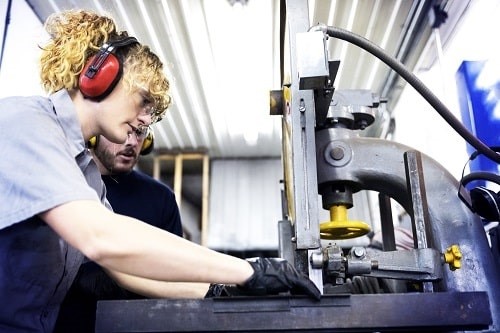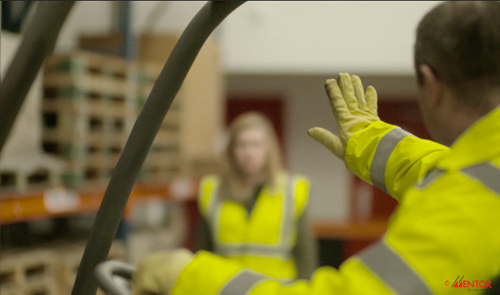Our ears are intricate and extremely delicate instruments. Much like a person’s eyesight, once the hearing has been damaged, it cannot be reversed. It is vital, therefore, to protect hearing from the damaging, long-term effects of noise at work.
Features
A custom approach to hearing protection
This may seem obvious, but our research, undertaken by Opinium on behalf of Specsavers Corporate Eyecare in February 2019 among more than 500 senior decision makers in UK businesses, reveals that one-third (34 per cent) of employees who require hearing protection for work purposes are not provided with it by their employer.
Noise levels
It is clear that avoiding loud noises and controlling noise levels is the best way to avoid damaging hearing. Hearing damage can start from around 85 decibels (dB) – that’s about the top end noise of a busy street, or the average lawn mower – if exposed to it for eight hours or more without hearing protection. After 85dB, for every noise increase of 3dB, the exposure time cuts in half. For example, it is only safe to be exposed to 88dB sound levels for up to four hours, 91dB for only two hours, and so on. By 112dB – about the volume of a leaf-blower or chainsaw – damage to hearing can occur in less than a minute.
Responsibility
Under the Noise at Work Regulations (2005), it is the responsibility of employers to protect their employees from exposure to excessive noise and noise-induced hearing loss. In our research, some employers themselves acknowledged that they are not providing the necessary hearing protection, and by failing to do so, they may be putting their employees’ hearing at risk.
The employer should undertake a noise assessment to determine the correct hearing protection required.
This will depend on several factors, including the level of noise and the amount of exposure an employee has to it. It is also the employee’s responsibility to make sure they use the hearing protection provided.
 One-third of employees who need hearing protection for work purposes are not provided with it by their employer, found a survey
One-third of employees who need hearing protection for work purposes are not provided with it by their employer, found a survey
Instant fit
Advances in technology mean the latest generation of instant-fit devices are now more effective and comfortable than ever. They are reusable and often designed for use in specific environments, like swimming, sleeping and riding a motorbike. However, they are not necessarily the best option for occupational noise protection and are best reserved for occasional leisure and DIY use.
Custom fit
Custom-fit devices are aimed at providing protection at work or in more specialised environments. Produced from an impression taken of the ears, or from 3D scanning, custom-fit hearing protection provides an individual with comfortable fit and guaranteed levels of protection.
Made from soft, medical-grade silicone, the best custom hearing protection is hardwearing and the bespoke fit means employees can wear them for longer than standard ear plugs, with greater levels of protection and comfort. Specialised hearing protection products are designed to protect the ears but also allow important sounds, like voices, to be heard clearly.
Only a quarter of employers provide custom-fit hearing protection
Our survey also looked at the types of hearing protection offered:
• Overhead earmuff 42 per cent
• Foam earplug 37 per cent
• Custom-moulded earplug 26 per cent
• Ear canal caps 21 per cent
• Flanged earplug 20 per cent
• Integrated earmuff 18 per cent
• Banded earplug 17 per cent.
Custom-moulded ear plugs are generally accepted to be the most effective solution for hearing protection, yet these are provided by just a quarter (26 per cent) of employers. While it is good to see that at least some hearing protection is being offered, employers should consider whether what they have provided is adequate.
Avoidable loss
Poor hearing is not something that is inevitable with old age. Nor is loss of hearing something that only affects older people. There are many factors that contribute to hearing loss, the most common being exposure to noise. This may be as slight as working around computer printers or next to an air conditioner, depending upon the amount of time spent in the vicinity of the noise.
It is important, therefore, that employers consider all employees and working roles. Although employees using heavy machinery in a manufacturing environment may be the obvious candidates for hearing protection, low-level noise hazards must be kept in mind too.
Hearing loss can have a profound effect on those who are affected. It can make conversations difficult and lead to isolation. Hearing protection is not, therefore, a matter of health and safety alone, it is also hugely significant to the wellbeing of employees.
Government noise action plans: bit.ly/2R6N0Jl
Jim Lythgow is Director of strategic alliances, Specsavers Corporate Eyecare
FEATURES

Targeting dust in construction
By Belinda Liversedge on 30 October 2025
Rohan Jindal was cycling to college in Dehli where he was studying engineering, when he had to stop. Not because of the hot sun beating down, but because he couldn’t breathe. And although asthmatic, that wasn’t the trigger. Looking all around he saw construction sites emitting large clouds of dust. This was his ‘a ha’ moment. “What,” he asked himself “do they do in construction to supress the dust?”

Paper vs digital – how CFTS is revolutionising work equipment inspections for members
By Rob Fisher, CFTS on 30 October 2025
A new mobile app makes it easier for CFTS-accredited businesses to manage the delivery of Thorough Examinations of customers’ work equipment, but it also benefits the customer through automated reminders about the safety of their machine and the results of the examinations.

Keeping people safe around material handling equipment at peak times
By Andy Cartwright, Mentor FLT Training on 30 October 2025
For many businesses, the Christmas and New Year period sees increased use of equipment like forklifts as customer demand, sales and goods handling surge, so it’s essential that measures like adequate segregation of people and machines are in place to keep everyone safe.



